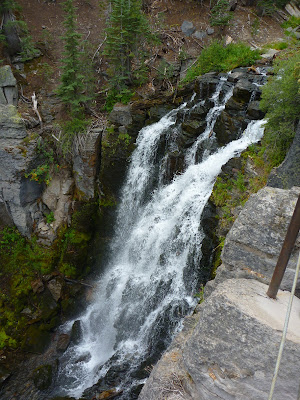Scirus (scirus.com) is (was) a search engine serving the scientific community. Elsevier's subscription-free portal “Scirus for scientific information only” was designed for open access of the scientific literature including databases such as Arxiv (arxiv.org) and NCBI's Pubmed (ncbi.nlm.nih.gov/pubmed) and, in general, for documents under .edu, .org, .gov,.ac.uk as well as .com domains.
To ensure a smooth transition to alternative search solutions, the Scirus home page gives an early announcement of Scirus' retirement plan:
Finding alternatives is never easy, once you have accustomed yourself to a particular service and its ins & outs. What might those alternatives be? Google Scholar for the Surface Web plus the diverse set of portals tailored to specific tasks and disciplines?
In chemistry, materials science and nanotechnology, for example, word-based text search has always been just one entry strategy to find documents, data and facts. In addition, the formulation of search requests by using compositional formulae or SMILES—special notations that allow substructure and similarity matching, supplementing string comparison—is routinely employed in data mining concerning chemical materials and molecular structures. The CurlySMILES language has been developed to annotate and communicate nanostructures. However, the success of such specialized formulation strategies depends on their priorly designated association with documents and their implementation into databases, archives, repositories and the World Wide Web.
In HTML5-based Web design, the integration of chemical microdata vocabularies such as Axeleratio's ChemId Vocabulary for chemical compound identification is a way to enhance the chemistry-aware Semantic Web. Encouragingly, the ThermoML project demonstrates that the cooperation between scientific institutions and journal publishers can set standards for open-access representation of data in a specific domain—thermodynamics, providing not only a base for task-driven data extraction, but also for chemical modeling as well as computer-assisted materials & process design.
The science-oriented approach of Scirus stays alive—for everyone seeking scientific information! And the study and optimization of task-specific search strategies across language barriers is evolving into a science of its own.
Keywords: Scirus, Internet service, scientific search, semantic web, cheminformatics, data mining, content management, query formulation, search strategy.
To ensure a smooth transition to alternative search solutions, the Scirus home page gives an early announcement of Scirus' retirement plan:
We are sad to say goodbye. Scirus is set to retire in early 2014. An official retirement date will be posted here as soon as it is determined.
Finding alternatives is never easy, once you have accustomed yourself to a particular service and its ins & outs. What might those alternatives be? Google Scholar for the Surface Web plus the diverse set of portals tailored to specific tasks and disciplines?
In chemistry, materials science and nanotechnology, for example, word-based text search has always been just one entry strategy to find documents, data and facts. In addition, the formulation of search requests by using compositional formulae or SMILES—special notations that allow substructure and similarity matching, supplementing string comparison—is routinely employed in data mining concerning chemical materials and molecular structures. The CurlySMILES language has been developed to annotate and communicate nanostructures. However, the success of such specialized formulation strategies depends on their priorly designated association with documents and their implementation into databases, archives, repositories and the World Wide Web.
In HTML5-based Web design, the integration of chemical microdata vocabularies such as Axeleratio's ChemId Vocabulary for chemical compound identification is a way to enhance the chemistry-aware Semantic Web. Encouragingly, the ThermoML project demonstrates that the cooperation between scientific institutions and journal publishers can set standards for open-access representation of data in a specific domain—thermodynamics, providing not only a base for task-driven data extraction, but also for chemical modeling as well as computer-assisted materials & process design.
The science-oriented approach of Scirus stays alive—for everyone seeking scientific information! And the study and optimization of task-specific search strategies across language barriers is evolving into a science of its own.
Keywords: Scirus, Internet service, scientific search, semantic web, cheminformatics, data mining, content management, query formulation, search strategy.















